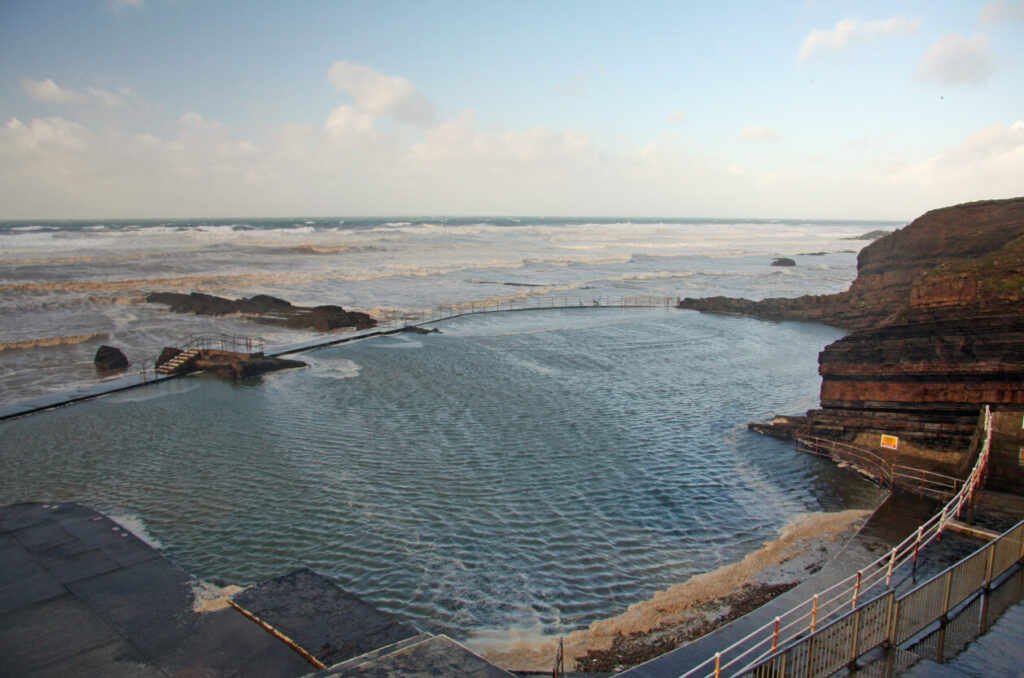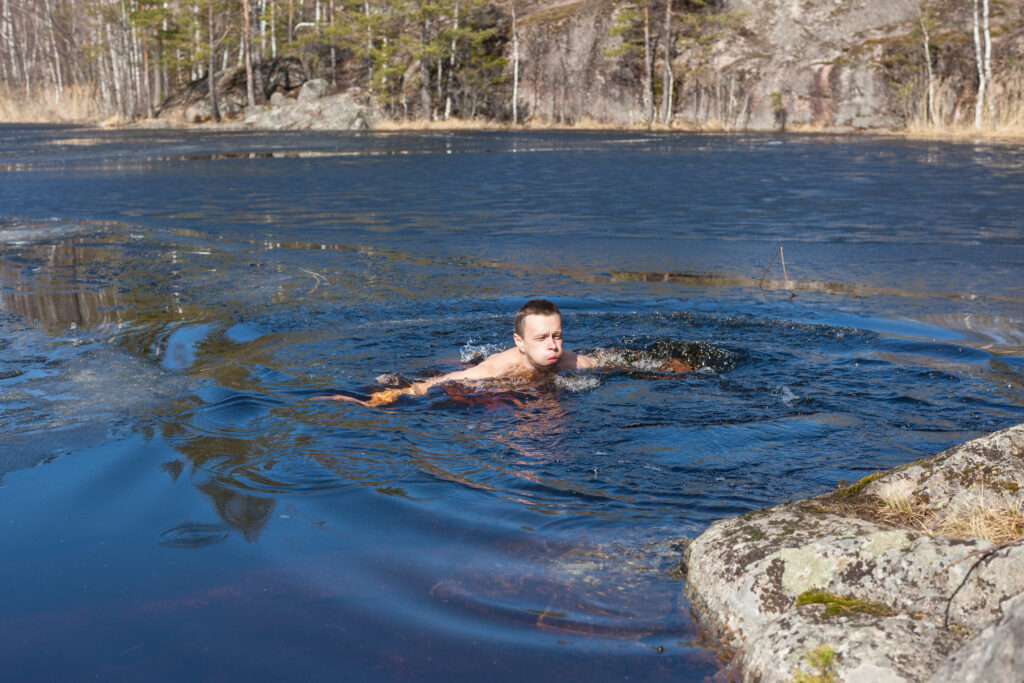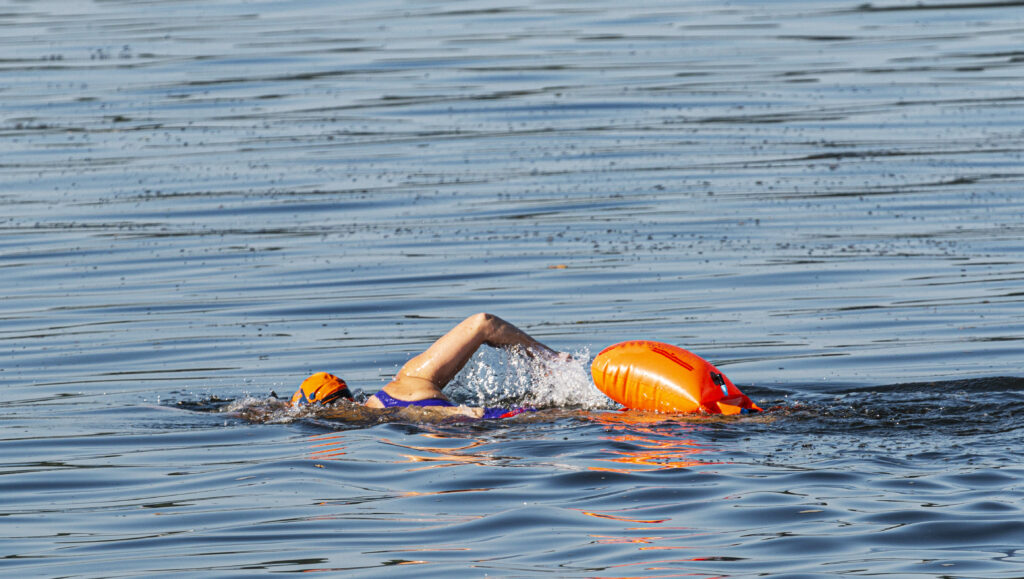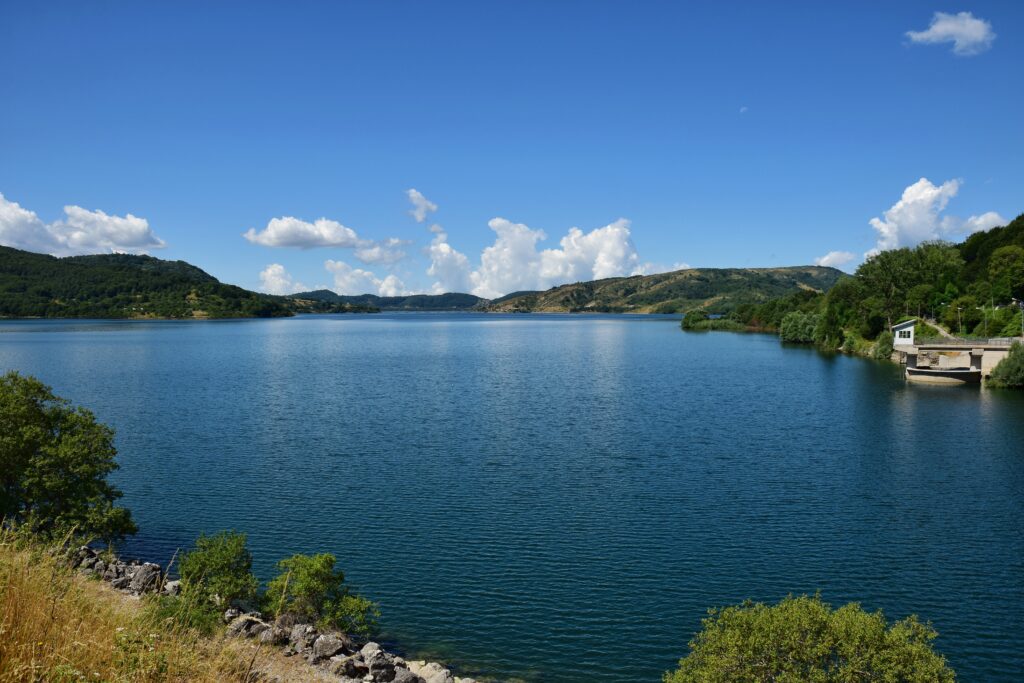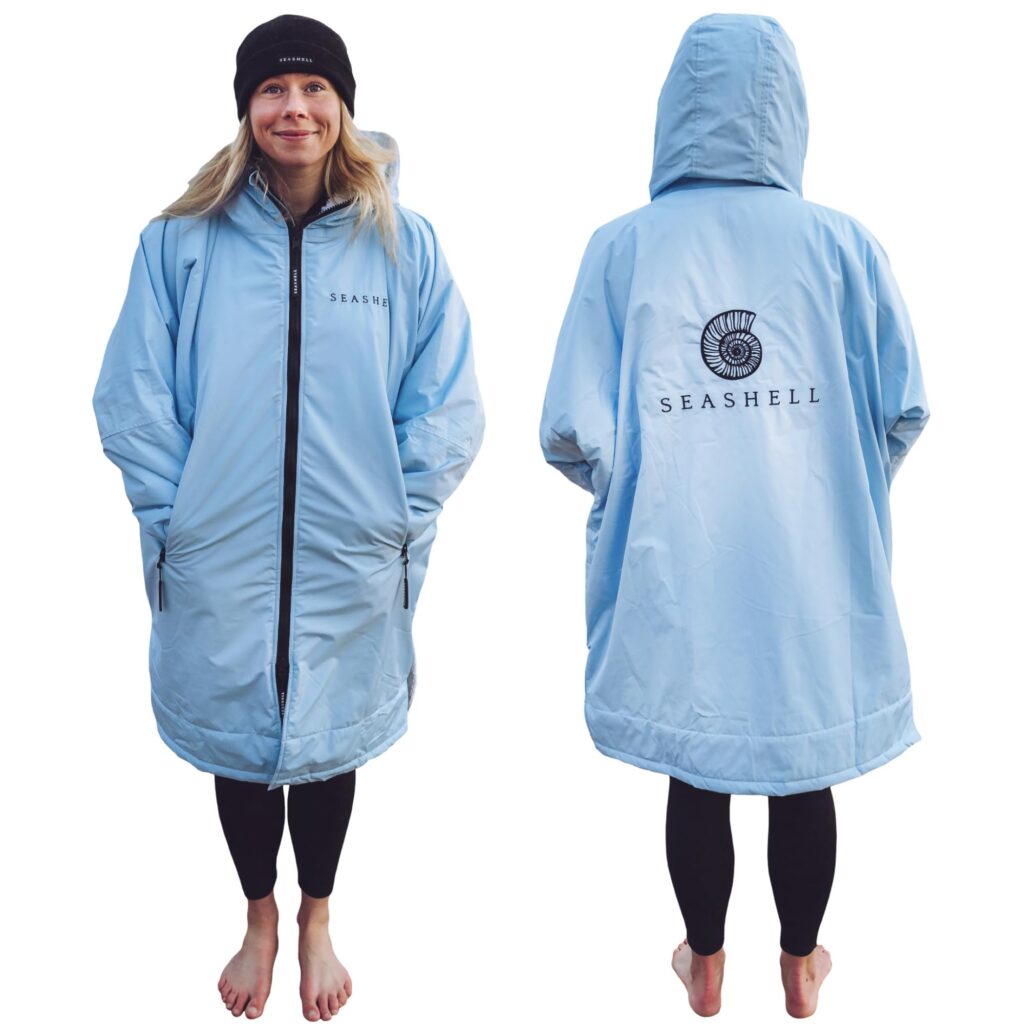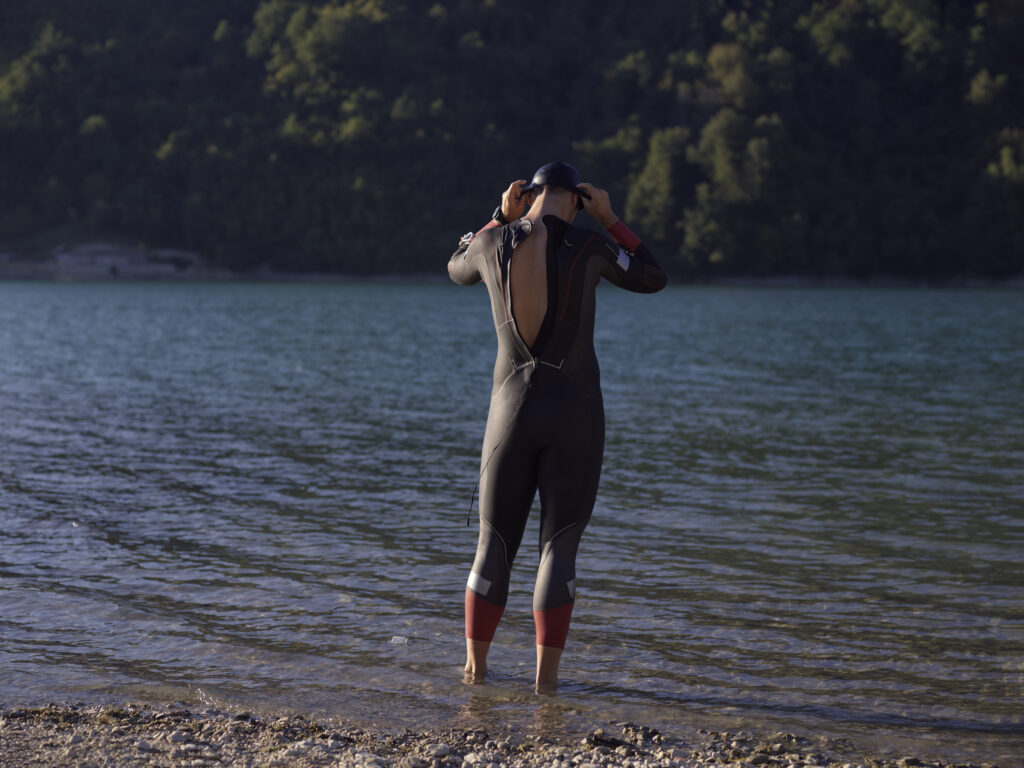When planning a sea swimming adventure in the UK, it is crucial to consider sea water temperatures to ensure a comfortable and safe experience. The UK’s sea temperatures are influenced by several factors, including seasonal changes, geographical location, and ocean currents. Typically, the warmest sea water temperatures are experienced in late August and early September, when the accumulated heat from the summer sun reaches its peak.

Sea swimming enthusiasts looking for the best time to take a dip will find these late summer months to be the most pleasant. During this period, sea temperatures can vary regionally, but generally, the waters are at their most inviting. Coastal areas particularly benefit from the moderation provided by the Gulf Stream, which contributes to milder water temperatures that are conducive to swimming.
Whilst the warmer sea temperatures may be enticing for a swim, it’s still important for swimmers to acclimatise to the sea conditions, as water temperatures can often feel cooler than air temperatures. Even at their warmest, UK sea temperatures can be brisk, and safety precautions should always be a priority when swimming in open water.
Understanding Sea Water Temperatures in the UK

Knowing the ideal time for sea swimming in the UK revolves around understanding the patterns of sea water temperatures. This includes considering ocean currents, the annual temperature cycle, and how local weather conditions can affect temperatures.
Influence of The Gulf Stream on UK Sea Temperatures
The Gulf Stream significantly contributes to milder sea temperatures around the UK. Originating in the Gulf of Mexico and flowing across the North Atlantic, it warms the UK coastline, making it warmer than would be expected at its latitude.
Annual Variations in Sea Temperature
Sea temperatures around the UK can vary widely throughout the year. According to the Met Office, average sea temperatures peak in late August to early September because the waters have been warmed by the summer sun.
Impact of Weather Conditions on Sea Temperature
Weather conditions can cause fluctuations in sea temperatures. Wind direction, for instance, can bring warmer or cooler waters towards the shore, influencing the temperature. Extended periods of sunshine or rain can also alter the average sea temperatures temporarily.
The Best Time of Year for Sea Swimming in the UK
The optimal period for sea swimming in the UK is when water temperatures are at their warmest, typically experienced during the summer months. Sea temperatures rise gradually throughout the season, providing comfortable conditions for swimmers.
Summer Months: Peak Temperatures for Swimming
During the summer, sea temperatures around the UK coastline achieve their peak warmth. Generally, late August to early September marks the time when waters are most likely to be at their warmest. Sea temperatures in the summer can be inviting enough for most recreational swimmers without the need for a wetsuit.
Warm water enthusiasts may find the warm spring leading into early summer a good time to start acclimatising to outdoor swimming, with anticipated temperature increase. However, these months might still carry a chill, and caution is recommended for those not accustomed to cold water swimming.
The Transition Seasons: Spring and Autumn Considerations
The transition seasons of spring and autumn see more variable sea temperatures. In early spring, the sea is often at its coldest, with temperatures rising slowly towards the end of the season. During autumn, water temperatures are relatively warm initially due to the accumulated heat from the summer but cool steadily. Swimmers might still enjoy agreeable temperatures into early autumn, making September an optimal extension for sea swimming activities.
Regional Sea Temperature Differences Within the UK

Sea water temperatures around the United Kingdom exhibit distinct regional variations, often influenced by geographical position and water currents. The temperatures can significantly vary from the chilly waters off Scotland to the comparatively mild seas around England’s South West.
South West England: Warmer Waters
The waters of South West England, particularly around Cornwall and Penzance, typically experience some of the warmest sea temperatures in the UK. The influence of the Gulf Stream ensures that areas like Plymouth benefit from warmer waters, with temperatures that can be pleasant for swimming during the peak summer months. For instance, the Plymouth Marine Laboratory records data that often indicate sea temperatures several degrees warmer than the rest of the UK.
Scotland and North Sea Variability
In contrast, sea temperatures around Scotland and the North Sea show higher variability and are generally cooler. Aberdeen, situated on the North Sea coast, presents lower sea temperatures year-round in comparison to southern regions. This is partly due to the colder currents that affect these northerly waters, resulting in a shorter season suitable for sea swimming.
Comparison with Other UK Regions
Other regions around the UK, such as the coast near Southampton in the south, exhibit a more intermediate range of sea temperatures. The variations in the UK Sea Temperature can be attributed to factors like the local climate, latitude, and marine currents, which together play a significant role in determining the regional sea temperature profiles across the United Kingdom.
Preparation for Sea Swimming

Before venturing into the sea, swimmers should equip themselves with proper gear and understand the risks of cold water. Being fully prepared significantly enhances the safety and enjoyment of sea swimming.
Choosing the Right Wetsuit
A crucial aspect of sea swimming is selecting a wetsuit that offers both warmth and mobility. In the UK, water temperatures can vary widely, but the sea is at its warmest in September. During the colder months, a thicker wetsuit, between 5mm to 7mm, is advisable for insulation. Wetsuits come in various styles; full-length suits are recommended for colder waters, while shorties may be sufficient for warmer conditions. Look for wetsuits with a snug fit to prevent water from circulating and chilling the body, but ensure it does not restrict movement, especially in the shoulders for swimming strokes.
Understanding Cold Water Shock
Cold water shock is a physiological response to sudden immersion in cold water and can cause involuntary gasping and hyperventilation. Swimmers should acclimatise by entering the water slowly, allowing the body time to adjust. As per recommendations from sea swimming experts, start by splashing water on the face and upper body before fully submerging to reduce the shock response. Knowing the signs of cold water shock, such as disorientation and rapid breathing, is imperative for all sea swimmers, regardless of their experience level.
Factors Affecting Comfort and Safety in Sea Swimming

When planning a sea swim, it’s important to consider various factors that can influence both comfort and safety. The United Kingdom’s sea temperatures peak during late summer, but there are other elements such as sunshine, air temperature, and water conditions that play a crucial role as well.
The Role of Sunshine and Air Temperature
Sea swimming comfort in the UK is greatly enhanced by sunshine and air temperature. During the summer months, usually from June to August, prolonged sunshine not only raises the water temperature but also enhances the overall experience of swimmers. Higher air temperatures contribute to warmer sea waters, providing more pleasant conditions for swimming.
However, it’s essential to verify the weather forecast before a swim, as British weather can be highly changeable. Balmy days can lead to sizable crowds at local beaches, which one should account for when planning their swim.
Dealing with Varied Water Conditions
The sea has varied conditions that can affect a swimmer’s safety. Rough waters, influenced by weather changes and tidal flows, can pose challenges to even the most experienced swimmers. For instance, understanding the presence of rip currents and recognising signs of changing tides is vital for avoiding dangerous situations.
Before entering the sea, one should check the bathing water quality ratings, which classify the cleanliness of the water and indicate the presence of pollutants. Swimmers should also consider the tidal flows, which can be especially strong in narrow channels and near headlands. It is advisable to swim at lifeguard-patrolled beaches when possible, to ensure help is on hand in case of an emergency.
Exploring Marine Life and Other Considerations

When planning a sea swim in the UK, it’s not only the temperature that should be considered, but also the marine life swimmers may encounter, and how human activities impact the delicate balance beneath the waves.
Encounters with British Marine Species
The UK waters are home to an array of marine species, which vary depending on the season and water temperature. Blue Sharks, for example, are typically spotted off the coast during the warmer months. These majestic creatures, although formidable, generally pose little threat to swimmers.
Impact of Human Activities
Human interactions with the sea have a profound impact on marine ecosystems. Divers and researchers play a crucial role in monitoring the effects of warming waters and pollution on marine life. They document shifts in species distribution and the health of underwater habitats, providing valuable data for conservation efforts.
Noteworthy UK Sea Swimming Locations

When seeking the warmest seawater in the UK for a swim, various spots across the British Isles beckon with their favourable conditions. These locations range from bustling, popular beaches to secluded coves that provide a tranquil swimming experience.
Popular Beaches for Sea Swimming
Cornwall and Devon, situated in the South West, are renowned for their inviting waters, especially during the late summer months when the sea typically reaches its warmest temperatures. The Bristol Channel also sees an increase in sea temperature due to its shallow depth, making nearby beaches a pleasant choice for a swim.
- Bracklesham Bay, West Sussex: The observatory at the Channel Coast reports rising sea temperatures through the summer season, peaking around August.
- Skegness, Lincolnshire: Known for its expansive golden sands and amusement offerings, it also provides warmer waters in peak seasons.
- Morecambe, Lancashire: A popular coastal spot that not only offers warmer sea temperatures in the late summer but also features beautiful sunsets.
Hidden Gems Away from the Crowds
While popular beaches provide amenities and company, some swimmers may seek out less-travelled locations for a more serene experience.
- Deal, Kent: It offers clear waters and a pebbled shoreline, becoming a favourable swim spot that’s relatively quieter than its more frequented counterparts.
- Hidden coves along the Cornwall coast: Many small beaches and bays can be safer for swimming later in the year, thanks to the residual warmth absorbed by the surrounding rocks.
Each location presents unique qualities that can contribute to the warmth of the sea, with factors like geographical position, depth, and local currents playing pivotal roles in sea temperature. With careful timing, these UK spots can offer delightful sea swimming experiences.
Global Sea Temperature Comparisons

When considering the best time for sea swimming in the UK, it’s essential to compare global sea temperatures to understand when and where the water may be most inviting.
UK vs. Popular Sea Swimming Destinations
The sea temperatures around the UK often peak during the late summer due to the region’s geographical position and the cumulative warming effect of the summer sun. In contrast, popular swimming destinations like the Mediterranean, Portugal, and California undergo different seasonal patterns influenced by their latitudes and marine currents.
The Mediterranean Sea experiences its warmest sea temperatures from July to September, often ranging between 24°C to 26°C, as it benefits from consistently high summer sunshine and the warming effect of the surrounding land masses.
Portugal’s coastal waters are warmed both by the sun and by the northward-flowing Canary Current. These waters are particularly temperate during the summer, reaching upwards of 20°C, but can be cooler than the Mediterranean due to the influence of the broader Atlantic Ocean.
California’s coastal waters are affected by the California Current, which brings cooler waters down from the north. This means that even in the height of summer, seawater temperatures can remain relatively cool, with averages hovering around 17°C to 20°C.
In the UK and Ireland, the combination of the Gulf Stream and summer sun gradually warms the waters, with temperatures typically peaking at around 15°C to 17°C in late August or early September. The influence of the Gulf Stream cannot be overstated, as its warm water has a significant modulating effect on seawater temperatures, making sea swimming more pleasant in these regions than would be expected at these latitudes.
Trade winds and currents play vital roles in determining sea temperatures worldwide, driving warmer and colder waters across the globe and affecting regional climates.
To summarise, while the UK’s seas are at their warmest towards the end of summer, comparing them to other global locations reveals a diverse range of peak sea temperatures driven by climatic patterns, currents, and geographical influences.
Frequently Asked Questions
Sea swimming enthusiasts often seek the warmest sea water temperatures for an enjoyable experience. This frequently asked questions section sheds light on when and where one can find the optimal UK sea temperatures for swimming.
Which month typically has the warmest sea temperatures for swimming in the UK?
The warmest sea temperatures for swimming in the UK are typically found in August, when the water has had the entire summer to heat up.
Where around the UK are the sea temperatures most conducive to swimming?
Areas like the South West coast of England generally offer sea temperatures that are more conducive to swimming, benefiting from relatively warmer waters.
At what time of year does the UK sea temperature reach optimal conditions for swimming?
Optimal conditions for swimming in the UK’s seas are usually reached between late July and early September, aligning with the peak of the summer season.
What is considered a comfortable sea water temperature for swimming in the UK?
Sea water temperatures between 18°C and 26°C are considered comfortable for most swimmers in the UK.
How does the sea temperature in the UK vary throughout the year?
Sea temperature in the UK varies significantly through the year, being coldest in the winter months and gradually warming up through spring and peaking in summer before cooling down again in autumn.
During which season can you expect the sea temperatures to be warm enough for swimming in the UK?
Summer season, particularly from June to September, is when one can generally expect the sea temperatures to be warm enough for swimming in many parts of the UK.


